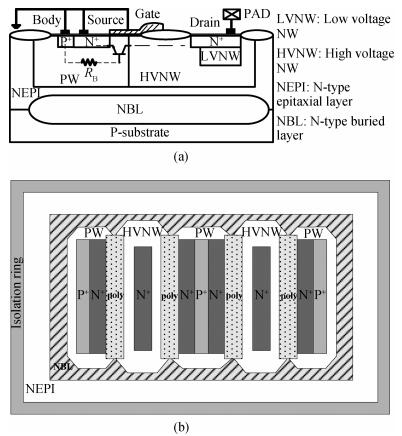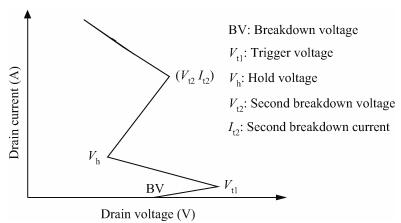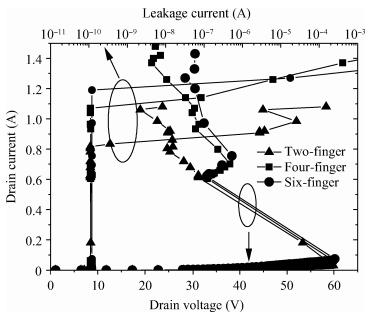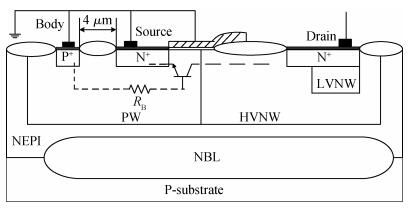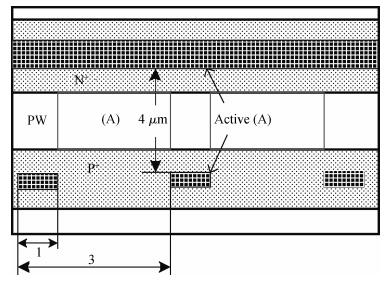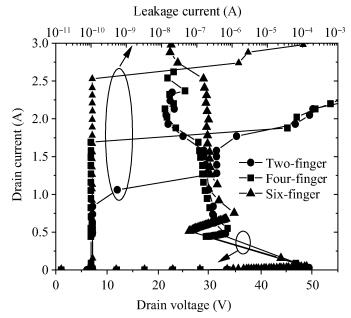| Citation: |
Chuan He, Lingli Jiang, Hang Fan, Bo Zhang. Increasing substrate resistance to improve the turn-on uniformity of a high-voltage multi-finger GG-nLDMOS[J]. Journal of Semiconductors, 2013, 34(1): 014006. doi: 10.1088/1674-4926/34/1/014006
****
C He, L L Jiang, H Fan, B Zhang. Increasing substrate resistance to improve the turn-on uniformity of a high-voltage multi-finger GG-nLDMOS[J]. J. Semicond., 2013, 34(1): 014006. doi: 10.1088/1674-4926/34/1/014006.
|
Increasing substrate resistance to improve the turn-on uniformity of a high-voltage multi-finger GG-nLDMOS
DOI: 10.1088/1674-4926/34/1/014006
More Information
-
Abstract
With the impact of the non-uniform turn-on phenomenon, the ESD robustness of high-voltage multi-finger devices is limited. This paper describes the operational mechanism of a GG-nLDMOS device under ESD stress conditions and analyzes the reason that causes the non-uniform turn-on characteristics of a multi-finger GG-nLDMOS device. By means of increasing substrate resistance, an optimized device structure is proposed to improve the turn-on uniformity of a high-voltage multi-finger GG-nLDMOS. This approach has been successfully verified in a 0.35 μm 40 V BCD process. The TLP test results reveal that increasing the substrate resistance can effectively enhance the turn-on uniformity of the 40 V multi-finger GG-nLDMOS device and improve its ESD robustness.-
Keywords:
- ESD,
- multi-finger,
- GGLDMOS,
- turn-on uniformity
-
References
[1] Chun J, Nowak E, Manley M. Process and design for ESD robustness in deep submicron CMOS technology. IEEE International Reliability Physics Symposium, 1996: 233[2] Oh K H, Duvvury C, Banerjee K, et al. Analysis of nonuniform ESD current distribution in deep submicron NMOS transistors. IEEE Trans Electron Devices, 2002, 49(12):2171 doi: 10.1109/TED.2002.805049[3] Chen T Y, Ker M D. Investigation of the gate-driven effect and substrate-triggered effect on ESD robustness of CMOS devices. IEEE Trans Device Mater Reliab, 2001, 1(4):190 doi: 10.1109/7298.995833[4] Russ C, Bock K, Rasras M, et al. Non-uniform triggering of gg-nMOSt investigated by combined emission microscopy and transmission line pulsing. Electrical Overstress/Electrostatic Discharge Symposium Proceedings, 1998: 177[5] Lee J H, Wu Y H, Tang C H, et al. A simple and useful layout scheme to achieve uniform current distribution for multi-finger silicided grounded-gate NMOS. IEEE International Reliability Physics Symposium, 2007: 588[6] Ker M D, Chen T Y. Substrate-triggered technique for on-chip ESD protection design in a 0.18μm salicided CMOS process. IEEE Trans Electron Devices, 2003, 50(2):1050[7] Polgreen T L, Chatterjee A. Improving the ESD failure threshold of silicided n-MOS output transistors by ensuring uniform current flow. IEEE Trans Electron Devices, 1992, 39(2):379 doi: 10.1109/16.121697[8] Fujiwara S, Nakaya K, Hirano T, et al. Source engineering for ESD robust NLDMOS. Electrical Overstress/Electrostatic Discharge Symposium Proceedings, 2011: 1 -
Proportional views





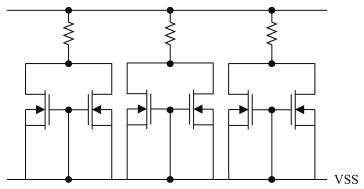
 DownLoad:
DownLoad:
